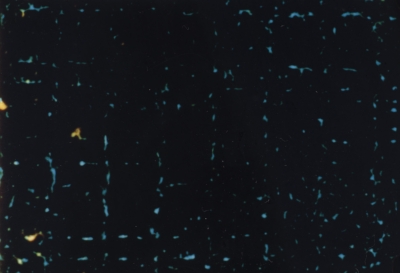
1996, Netherlands, 16mm, colour, silent, 32 min.
#7 is a film that was made by stamping paint onto transparent film and using the result of this as a negative. The colours in the film modulate from black via the primary light-colours and via the primary paint-colours to white. All movements in the film are caused by the interference of the stamped grid patterns and the perforation of the film-material. Working on the filmstrip directly was interesting to me because of the simplicity of it and because of the fact that the traditional perspective inherent in the optical system of the camera becomes irrelevant. Illusion of depth occurs because of the difference in size of particles of paint, illusion of movement occurs when these particles are in some way equally spaced on the film. The colours of #7 are based on the opposition of pigment and light. The colour model of theoretician Harald Küppers reduces this opposition to a unity at a deeper level in our perceptual system. I used his colour model to structure a slow evolution from black to white. This is an elaboration of an old idea worded amongst others by Aristotle that colours result from he clash between light and dark. When stamping grid patterns onto film the content of every film frame is in part determined by chance. In contrast with this all parameters that allow for control are composed in an elaborate score. The time structure is built up from the separate film frame to 28 sections that group into five larger parts. Each of these sections has its own colour scheme and its own choice from the 17 grid patterns used.
